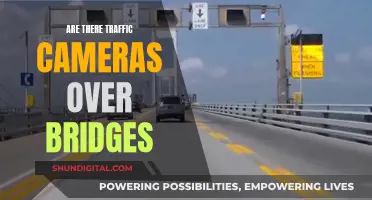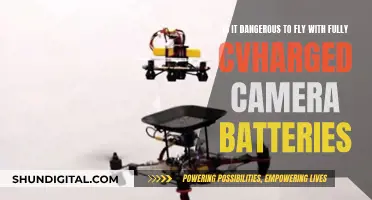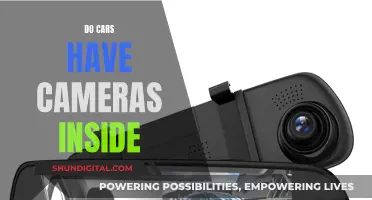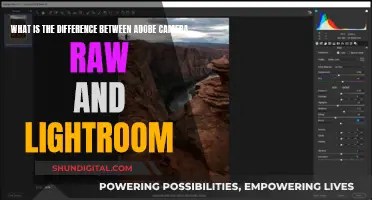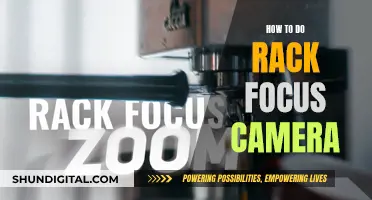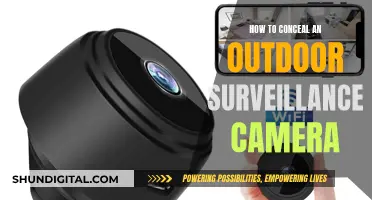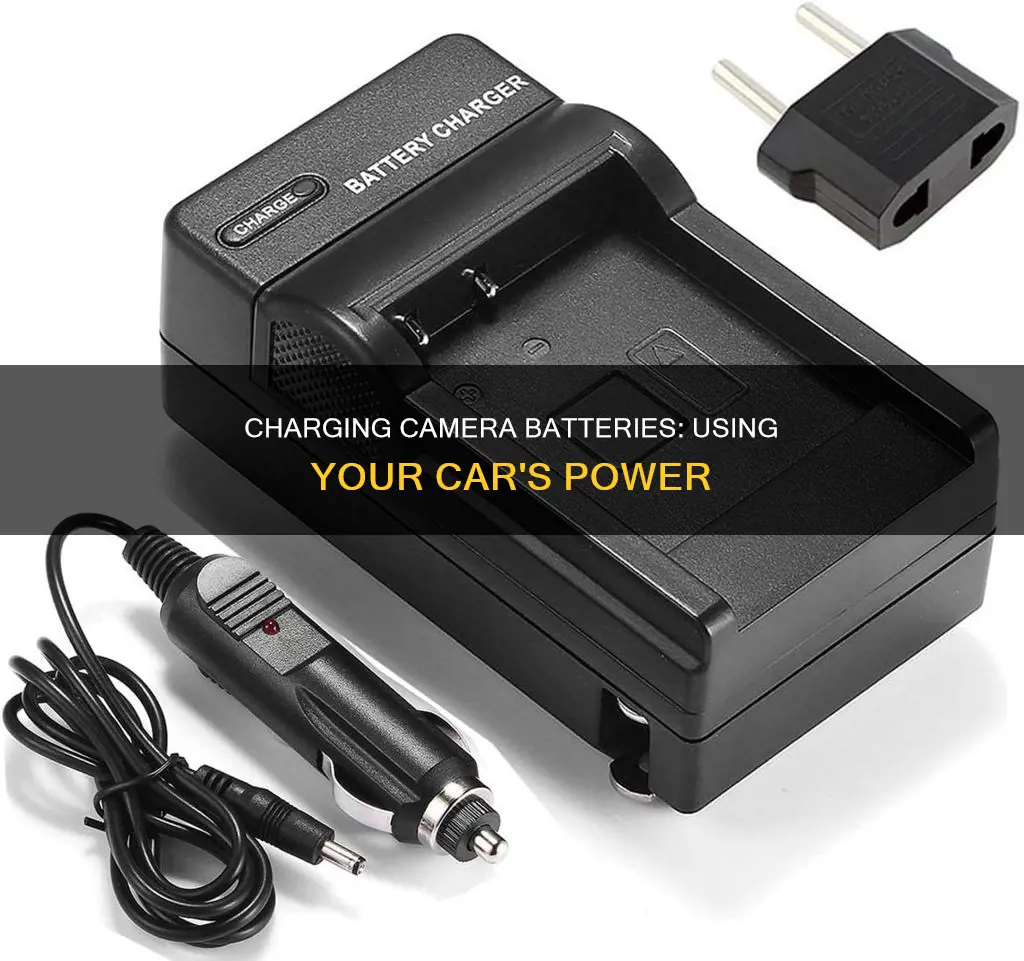
If you're on the road and your camera battery is running low, there are a few ways to charge it in your car. One option is to purchase a DC version of your charger or a third-party camera battery charger that operates from a lower voltage, either 12V or a 5V (USB). Alternatively, you can use a power inverter to convert the car's 12V DC power to 110V AC power and then plug in your standard charger. Another option is to charge your camera battery from the car battery directly, using a lightbulb as a current regulator to ensure a safe charging current. When choosing a method, it's important to consider factors such as convenience, cost, safety, and the availability of the required equipment.
| Characteristics | Values |
|---|---|
| Power source | Car's 12V DC power from the cigarette lighter |
| Manufacturer-supplied camera battery charger | Operates on 110V AC |
| Alternative | Buy a third-party camera battery charger that operates from a lower voltage, either 12V or a 5V (USB) |
| Power inverter | Converts 12V to 110V |
| Power inverter | Can be noisy and can drain a car battery |
| DC version of your charger | Can charge other camera batteries |
| DC version of your charger | Usually only one or two power outlets in a vehicle to use for charging |
| Splitters | Allow multiple DC unit charging at once |
| Inverter | Takes DC power input from a vehicle and outputs standard wall socket AC power |
| Inverter | Costs around $50 for a nicer unit |
| Solar charger | Can be used for hiking/trekking/biking |
| Solar charger | Not dependable due to reliance on weather conditions |
What You'll Learn

Using a car's auxiliary power outlet
If you're going on a trip and want to charge your camera battery in your car, you can do so using the car's auxiliary power outlet (also known as the cigarette lighter).
The camera battery charger that came with your camera probably only operates on 110V AC, so you'll need to purchase a power inverter to obtain this from your car's 12V DC power supply. However, these devices can heat up and pose a safety risk.
A safer option is to buy a third-party camera battery charger that operates from a lower voltage—either 12V or 5V (USB). You can then plug this directly into your car's 12V outlet, or into a USB adapter that you plug into the outlet.
If you're charging your camera battery while driving, be aware that some devices can deplete your car's battery and leave you stranded. To avoid this, you can buy a third-party charger that has multiple outputs, so you can charge multiple devices at once.
If you want an official accessory, you can also check if your camera manufacturer offers a car battery cable.
SpyPoint Camera Plans: What's the Cost of Each Camera?
You may want to see also

Using a power inverter
Step 1: Choose the Right Power Inverter
There are two main types of power inverters: pure sine wave and modified sine wave. Pure sine wave inverters provide a cleaner power output and are better for sensitive electronics. They are generally more expensive and suitable for running laptops, external hard drives, and devices with smart circuits. Modified sine wave inverters, on the other hand, are cheaper and suitable for simpler applications like battery charging. For charging camera batteries, a modified sine wave inverter should be sufficient.
When choosing a power inverter, consider the power rating. Add up the power requirements of the devices you plan to charge simultaneously and select an inverter with a higher rating to be safe. For example, if you have a 50-watt camera battery charger and a 20-watt AA battery charger, a 1000-watt inverter would be more than enough.
Step 2: Connect the Power Inverter
There are two ways to connect a power inverter in your car: through the cigarette lighter port or directly to the car battery. The cigarette lighter port is usually sufficient for most inverters, but if you need more power, you can connect the inverter directly to the car battery. Make sure to follow safety precautions when working with your car's electrical system.
Step 3: Plug in Your Camera Battery Charger
Once the power inverter is connected, simply plug your camera battery charger into the inverter. Most camera battery chargers have a power input of 110-120V, which matches the output of the power inverter. Make sure your charger is compatible with the power inverter's output voltage.
Step 4: Charge Your Camera Battery
With the camera battery charger connected to the power inverter, you can now charge your camera battery. Keep in mind that charging through a power inverter draws power from your car battery. If you're using a smaller inverter with the cigarette lighter port, your car battery will likely last 30 to 60 minutes before needing a recharge. To avoid draining your car battery, run the engine for approximately 10 minutes every hour. Alternatively, you can use a gas generator or an AC charger to recharge your car battery.
Step 5: Consider a Dedicated Car Charger
If you frequently need to charge your camera battery in your car, consider investing in a dedicated camera battery charger designed for car use. These chargers typically have a 12V input and can be plugged directly into your car's cigarette lighter port, eliminating the need for a power inverter. They are often more affordable and compact, making them a convenient option for photographers on the go.
Dash Cam Power: Staying Charged and Ready
You may want to see also

Using a third-party camera battery charger
If you don't have your original camera battery charger to hand, you can use a third-party charger or mobile power supply to charge your camera battery in your car. These devices usually support a variety of battery models with multiple ports.
Firstly, you should confirm the compatibility of the third-party charger or mobile power source to ensure that it supports your camera battery type. Check the voltage and current specifications of the third-party device match those of your camera battery to avoid any damage.
Once you've found a suitable third-party charger, remove the camera battery from your camera and insert it into the third-party charger. Then, connect the power supply and confirm that the charging indicator is on.
Wait for the battery to be fully charged, then remove it and reinsert it into your camera.
While third-party chargers are a good option in a pinch, it's recommended to use the original charger where possible to prolong the life of your battery.
Japan Camera Import: Customs and Charging
You may want to see also

Using a car battery with lightbulb regulators
If you're charging your camera battery in a car, it's important to remember that you're dealing with direct current (DC) electricity, which flows in one direction only, rather than alternating current (AC) electricity, which periodically reverses direction. Car batteries produce DC electricity, while power outlets in the home produce AC electricity.
If you're charging a camera battery from a car battery, you'll need to be careful not to discharge the car battery too much, or you'll be unable to start the car. You'll also need to be careful to connect the positive and negative terminals correctly.
One way to charge a camera battery from a car battery is to use an inverter to convert the DC electricity from the car battery to AC electricity, which can then be used to power a standard camera battery charger. However, this method is inefficient, as it involves converting DC to AC and then back to DC. It can also be unsafe, as the inverter can heat up.
A more efficient and safer method is to use a third-party camera battery charger that operates directly from the lower-voltage DC electricity produced by the car. These chargers typically use a USB connection, which is now a standard feature on most modern cameras.
Another option is to use a car battery cable accessory provided by the camera manufacturer, which can be used in conjunction with a battery charger.
If you don't have access to a charger or inverter, it is possible to connect a camera battery directly to a car battery, using lightbulbs as current regulators to prevent overcharging the camera battery. Here's how it works:
Small incandescent bulbs, such as flashlight bulbs and Christmas tree mini lights, can be used as current regulators to control the flow of electricity from a car battery to a camera battery. This method involves connecting the bulbs in parallel between the car battery and the camera battery, with the correct terminals connected. The bulbs will limit the current flowing to the camera battery, preventing overcharging.
For example, let's say your car battery is at ~13 volts and your camera battery is at ~7 volts. You want to charge the camera battery with a current of around half an amp. You can achieve this by connecting three mini Christmas light bulbs in parallel between the car battery and the camera battery. This will result in a voltage of 6 volts across each bulb, which will limit the current to around 0.5 amperes.
It's important to monitor the charging process and not leave it unattended, as overcharging the camera battery could lead to dangerous situations, such as the battery catching on fire. It's also important to make sure that the bulbs don't burn out, as this could remove the current regulation and allow too much current to flow.
This method of charging a camera battery directly from a car battery using lightbulb regulators is a creative solution for emergency situations when you don't have access to a charger or inverter. However, it requires careful monitoring and understanding of electrical principles to ensure safe and proper charging.
VTech Kidizoom Camera: What's in the Box?
You may want to see also

Charging from a DC source and resistor
Charging your camera battery using a DC source and resistor is a more technical method that requires understanding the electrical requirements of your camera battery. This method is useful when shooting outdoors and your default charger is unavailable.
To charge your camera battery using a DC source and resistor, follow these steps:
Step 1:
Connect the positive terminal of the DC power source to one end of the resistor. Then, connect the positive terminal of the resistor to the positive terminal of the camera battery. Ensure that all connections are secure and insulated to avoid any potential risks.
Step 2:
Connect the negative terminal of the DC power source to the negative terminal of the camera battery to complete the circuit.
It is important to note that you must follow these steps carefully to avoid damaging the battery. This method should only be used in emergencies when no other power source is available.
Additionally, ensure that the power source has a slightly higher voltage than the battery to supply the necessary power. This will ensure that your camera battery receives the requisite power to charge effectively.
Charging Cameras: A Solo Participant's Guide
You may want to see also
Frequently asked questions
You can charge your camera battery using the car's 12V DC power from the cigarette lighter. You can either use a power inverter to obtain 110V power from the car's 12V, or buy a third-party camera battery charger that operates from a lower voltage, either 12V or a 5V (USB).
Power inverters are more versatile as they can be used to charge other devices, not just your camera battery. However, they can heat up quite a bit and are not the safest option. They also require converting 12V to 110V and then back to a lower voltage, which is not very efficient.
Third-party camera battery chargers that operate from a lower voltage, such as 12V or 5V (USB), are generally safer and more efficient than power inverters. They are also smaller and lighter, making them more convenient for travel. However, they may only be able to charge a specific type of camera battery, so you'll need to ensure you get one that's compatible with your camera.


